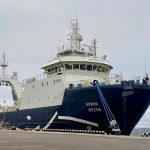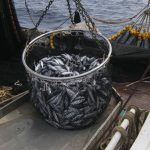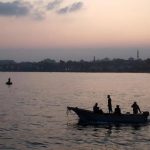Such areas, purportedly intended for scientific experimentation and providing a “reference” for monitoring MCZs, would ban many human activities including any form of fishing. According to official Natural England/JNCC guidance they should include examples from all broad scale habitats and habitats and species identified as features of conservation importance in each of the 4 English regional project areas.
However, the 2009 Marine and Coastal Access Act, which provides the legislative requirements for MCZs has no requirement for such no take zones.
Dale Rodmell, NFFO Assistant Chief Executive, said: “There is absolutely no need for draconian areas of “no-man’s land” for the purpose of measuring ecological improvement in MPAs which would be readily evident from any general time-series programme of monitoring. Such proposals are ill thought through and show a careless disregard for people’s livelihoods in order simply to give a free reign to conservation scientist’s experiments.”
“In many respects they represent the epitome of the conservation land-grab, anti-people philosophy that has never been far below the surface amongst parts of the conservation lobby and patently within the government’s conservation agencies which are prescribing such areas. This is just one of a range of shortcomings in the government’s MCZ policy that has so far failed to give careful consideration to balancing sustainable marine use with conservation.”
Regional MCZ Projects
English regional MCZ projects are now in a last minute dash to include reference areas in their network recommendations. This comes amid widespread condemnation that the process is too rushed to refine the network sufficiently within the timeframe of the projects, which must complete their recommendations by the end of August this year.
“When the regional projects have been tasked with attempting to develop a network recommendation in the space of little over 1 year, there is precious little time to have an effective dialogue on reference zones which in practical terms constitute planning a second MPA network.”
“Understandably representatives of the fishing industry who have been engaged in the projects in order to limit harm to the industry have deep reservations about engaging over such proposals. It is still essential, however, that the harm that such areas would cause is emphasised as strongly as possible.”
Data Limitations and Bias
The process of site selection is further hampered by the inadequate information base upon which to make robust decisions and regional project groups are faced with selecting areas in many cases virtually blindly in order to meet the official guidelines.
“When in the majority of the planning areas there is very limited ecological data that identifies what is actually there to protect, you know that decisions cannot be robust and this calls into question what scientific purpose these areas could really serve.”
Harm to Vulnerable Inshore Fishing Communities
What official ecological data does exist tends to be concentrated in coastal areas. This has created a tendency to bias MCZ proposals to those areas and reduce the flexibility for choice.
“When this is applied to what will become no take zones we are talking about at a stroke destroying local fishing communities who are restricted from moving elsewhere and who may have fished those waters sustainably for hundreds of years.”
“One has to seriously question whether this is really what society wants from Marine Protected Areas; scientific playgrounds and barren fishing communities that were once vibrant? After thinking about that one might also consider whether we have planned any equivalent areas on land. The answer to that is a definite no, so why are we doing it at sea?”








